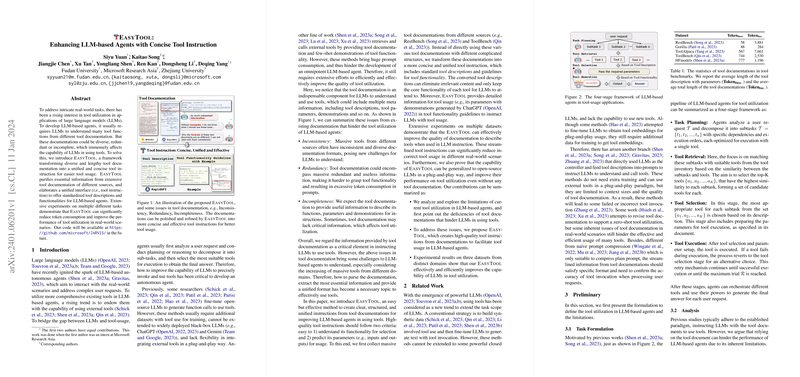Introduction
LLMs are transforming the way we interact with data and automate tasks. LLMs like OpenAI's GPT-4, Google's Gemini, among others, have been effectively utilized as bases for creating autonomous agents. Key to the effectiveness of such agents is their ability to leverage external tools – from APIs to specialized software – to complete tasks that exceed the scope of the data they were trained on. An obstacle that impedes the efficiency of LLMs in utilizing these tools is the diversity and complexity within different tool documentations often riddled with redundancies and inconsistencies.
Enhancing Tool Interpretation
A new paper introduces EASY TOOL, a method designed to parse tool documentation and distill it into concise and effective instructions, thereby simplifying the process by which LLMs understand and utilize various tools. EASY TOOL filters out non-essential information from tool documentations provided by different sources, therefore, bridging the gap between LLM understanding and practical tool usage. The proposed framework purges redundant content, focuses on the core functionality, establishes a uniform interpretation of tools' use cases, and appends detailed guidelines and parameters demonstrations to enable LLMs to process information accurately and efficiently.
Empirical Validation
The researchers conducted extensive experiments across different datasets, demonstrating the significant improvements that EASY TOOL brings in terms of performance and efficiency in tool utilization. In real-world scenarios, the standardized tool descriptions and guidelines offered by EASY TOOL resulted in a notable reduction in the number of tokens - a form of resource consumption in AI models - needed to understand and operate an assortment of tools. Tools previously described with lengthy and complex documentations are now rendered into streamlined instructions that LLMs can more easily interpret and follow.
Conclusion and Impact
EASY TOOL marks a pivotal development in the field of AI by significantly improving the way LLMs interact with and utilize external tools. The code for EASY TOOL is slated to be made publicly available, offering the potential for widespread adoption and further research enhancements. This standardized approach toward tool documentation offers a compelling solution that could expedite the integration of LLMs across a broad spectrum of applications, making complex tasks more approachable and further pushing the boundaries of what AI can achieve autonomously.
